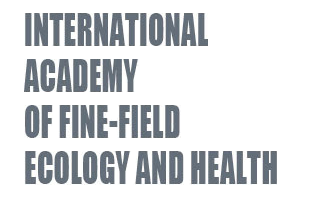Rhythmical activity, precisely connected with time, is characteristic for all living things in the Earth’s biosphere. Human organism is intended for wakefulness in the daytime and for rest (sleeping) in the nighttime. Meanwhile, a person does not feel spurt or malaise in organism every day in spite of his good health. It concerns nighttime as well as daytime, and it is not always possible to connect this fact with the time of activity or sleeping.
Until recently it has been considered, that day stimuli (light, heat, noise), which disappear at night, are the factors, influencing on life tempo of all living things on the Earth. In 1729 the fallacy of the given view was disproved by a French astronomer Jean-Jacques d'Ortous de Mairan. He placed a mimosa twig, sensitive to the light in a dark room, but daily motion of leaves did not stop.
The main idea, running through the present view on biological rhythms, is that every living thing in biosphere from protophytes to the most difficult human organism is “living clock”. Meanwhile, some scientists incline to believe, that rhythmical changeability in organism state and behavior is underlain inside. Other scientists consider, that exogenous factor «Х», influencing on all living things, presents in nature.
Nowadays more biophysicists incline to the hypothesis, that rhythmics of this world origins in the Universe, and just rhythmics is the exogenous factor, defining life in biospheric conditions.
The hypothesis, that living organisms have “biological clock” responsive to just the exogenous factor, is well corroborated in the conception of the rhythmic changeability of biospheric dissymmetry in the Earth’s Form Field, that is opened the flood-gates of a big number of investigations in biorhythmology. The process of rhythmic changeability of biospheric dissymmetry, reducing to change of organism functional state, was called the fine field biological rhythm. It should be noted, that among all frequencies of changeability of biospheric dissymmetry, as a result of the long-term research V.A. Nekrasov singled out a number of constant fine-field biological rhythms: diurnal; annual; diurnal-annual; lunar and etc.
The whole system of the Earth’s Form Field with its leftism and rightism is subject to the cyclicity – the fine field biological rhythms, influencing constantly on all living things on the planet. This knowledge helps to understand the causes of changes of the way a human of a left or right type feels, including increase or reduction of manifestation of different diseases and other processes, going on in biosphere. E.g.: change of weather conditions, earthquakes or tsunami. Meanwhile according to the fine field biological rhythms living organisms are always adapt to constant change of biospheric dissymmetry, trying to provide constancy of their internal environment (homeostasis).
All living things on the Earth feel differently the rhythms’ effect of change of biospheric dissymmetry. The distinctive feature is, that these rhythms influence oppositely on left and right people, on left and right animals, on left and right plants. It is necessary to understand, that every fine field biological rhythm effects on all living things simultaneously. So all living organisms feel adaptative difficulties especially on the days of its maximum values (Fig.)


